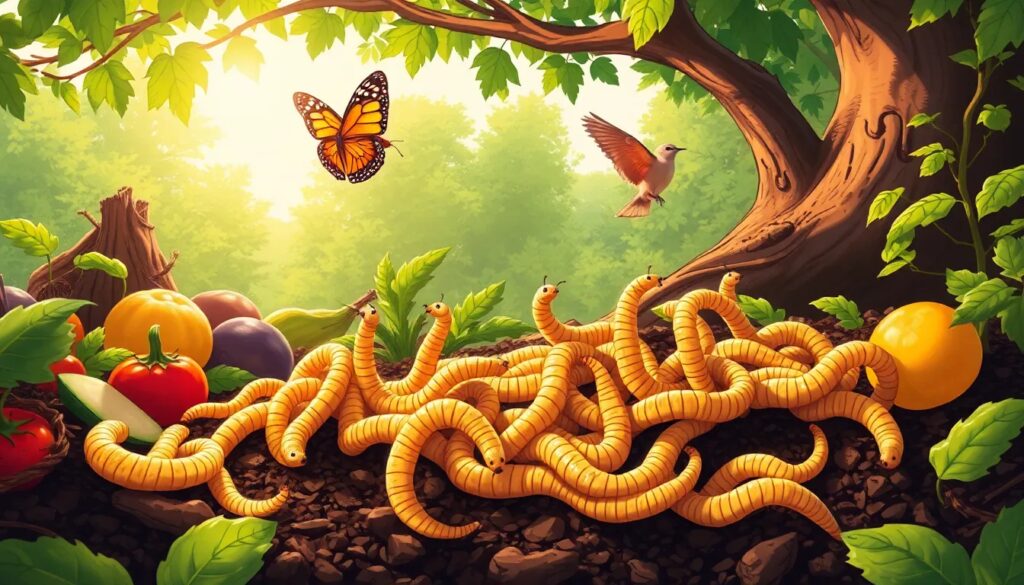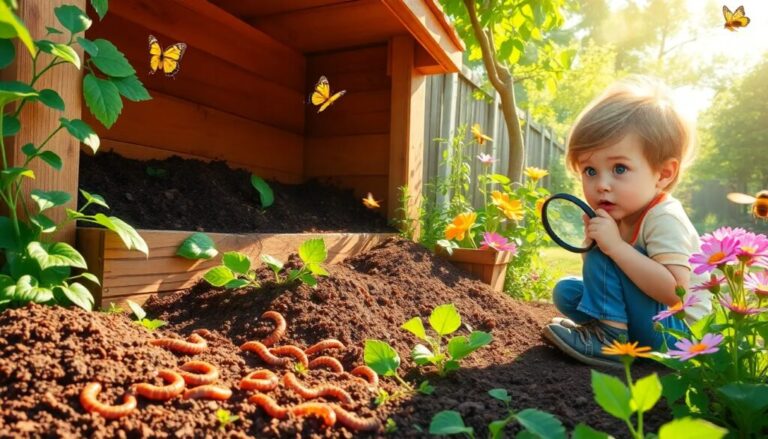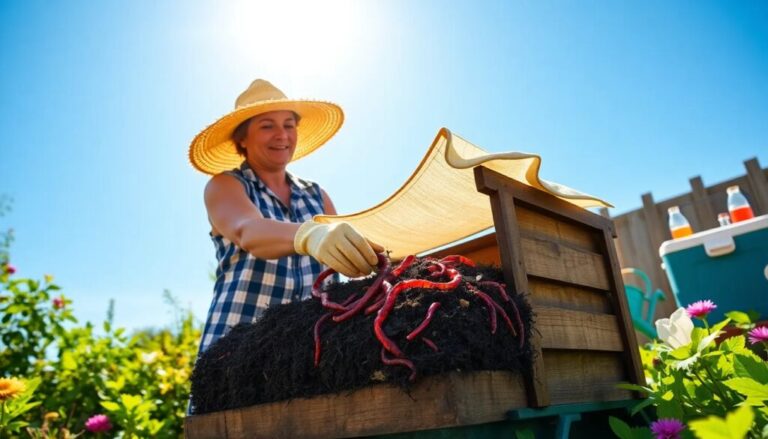Mealworms: The circle of life explained
Mealworms, the larvae of the yellow mealworm beetle (Tenebrio molitor), play a fascinating role in the ecosystem. Their life cycle and transformations are not only intriguing but also essential for various organisms, including pets and wildlife. In this article, we will explore the different stages of mealworms and their significance in nature.
Understanding mealworms’ life cycle offers valuable insights into their reproductive habits, growth, and nutritional benefits. We’ll discuss how to successfully raise mealworms and the environmental factors that influence their development.
What is the life cycle of mealworms?
The life cycle of mealworms consists of four main stages: egg, larva, pupa, and adult beetle. Each stage plays a crucial role in their development and has unique characteristics.
Initially, the female darkling beetle lays eggs that hatch into larvae, commonly known as mealworms. After approximately two weeks, the larvae emerge and begin their growth phase, which can last up to a year.
During this time, mealworms will shed their exoskeleton multiple times, a process known as molting. This stage is vital as it allows them to grow in size and develop their body structure. The transformation into the pupa stage occurs once they are fully grown.
How long does it take for a mealworm to turn into a beetle?
The transformation from mealworm to a fully developed beetle can take several weeks to months. After the larval stage, mealworms enter the pupa stage, which typically lasts around 20 days.
After this period, they emerge as adult beetles, ready to reproduce. The entire process, from egg to adult beetle, can take anywhere from two to three months, depending on environmental conditions.
What are the stages of the mealworm life cycle?
- Egg Stage: The female beetle lays eggs that are often hidden in food sources.
- Larval Stage: This is the mealworm stage, where they grow and molt multiple times.
- Pupal Stage: A transitional phase where mealworms develop into adult beetles.
- Adult Stage: The final stage where they reproduce and the cycle begins again.
Understanding these stages is essential for anyone interested in raising mealworms or managing their populations effectively. The varying durations of each stage are influenced by factors such as temperature and food availability.
How do mealworms reproduce?
Mealworm reproduction occurs when adult beetles mate and the females lay eggs that can total up to 500 eggs in their lifetime. This high reproductive rate is a significant factor in their population growth.
Optimal conditions, such as warm temperatures and adequate food sources, enhance their reproductive success. Environmental factors can significantly affect the rate of egg laying and larval survival.
Understanding mealworm breeding techniques can be beneficial, particularly for those looking to utilize them as a food source for pets or livestock.
Can mealworm beetles fly?
Interestingly, mealworm beetles, or darkling beetles, have the capability to fly, although they are not as agile as other beetles. This ability helps them escape predators and find new food sources.
However, their flight is typically limited and not as frequent as other species. Adult beetles rely on crawling more than flying, especially when foraging for food.
What do mealworms turn into?
Mealworms turn into adult darkling beetles upon completing their life cycle. This transformation is crucial for the continuation of their species. The adult beetles are often darker and more robust compared to their larval form.
As adult beetles, they can reproduce and establish new populations. Their life cycle showcases the intricate connections within ecosystems, where each stage contributes to the survival and reproduction of the species.
Nutritional benefits of mealworms for pets
Mealworms are not only fascinating from a biological perspective, but they also offer numerous nutritional benefits for pets. Rich in protein and essential fats, they serve as a healthy treat for reptiles, birds, and even some mammals.
Incorporating mealworms into a pet’s diet can provide vital nutrients such as potassium, making them an excellent choice for pet owners. Understanding the nutritional value of mealworms can help pet owners make informed dietary choices.
The impact of temperature on mealworm growth
Temperature plays a crucial role in the growth and development of mealworms. Optimal conditions can accelerate their life cycle, while extreme temperatures can hinder their growth.
For instance, higher temperatures can lead to faster reproduction and quicker development, while cooler temperatures may slow down these processes. Understanding the environmental factors affecting mealworms is essential for successful breeding and management.
How to raise mealworms successfully
Raising mealworms requires understanding their needs and the environment in which they thrive. To successfully cultivate them, consider the following tips:
- Temperature Control: Maintain an optimal temperature of around 70-80°F (21-27°C).
- Food Source: Provide a balanced diet, including oats, bran, and vegetables.
- Moisture Management: Ensure there is adequate moisture without making the substrate soggy.
- Space: Provide enough space to prevent overcrowding, which can lead to stress and slower growth.
By following these guidelines, you can ensure a healthy and thriving mealworm population, contributing positively to your ecosystem or food source for pets.
In conclusion, understanding the lifecycle of mealworms offers a glimpse into their ecological importance. From their nutritional benefits to their fascinating life stages, mealworms exemplify the interconnectedness of life on our planet. By appreciating their role, we can better manage and utilize these extraordinary creatures.










